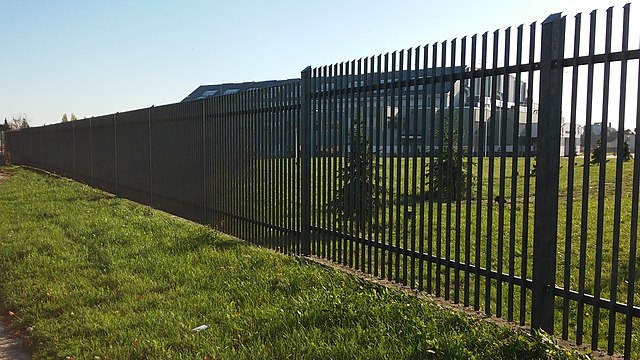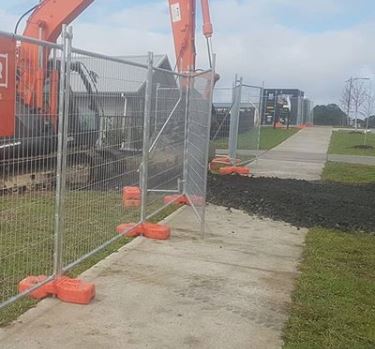What is Construction Sitework?
Sitework is the preliminary work of getting a construction site ready for building and development. This includes several precautionary and preventative measures performed during construction project that are not part of a building or house’s physical structure.
Sitework may involve clearing the land of debris, trees and brush, grading, soil erosion and sediment control, excavation, construction and installation of septic tanks and filtration systems, driveways, sign and fence installation, and other utilities. Sitework sets the stage for everything that is to come, protects the site, and helps minimize or eliminate a range of potential future problems.

- Erosion Control & Silt Fence Installation
- Preparation of the structure’s foundation through excavation or land clearing
- Rough or initial grading and final grading
- Landscaping
- Construction and paving of driveways and walkways
- Preparation and approval of permits and fees
- Septic and sewer systems
- Snow Removal and Street Sweeping
The budget allocated for sitework projects can be up to 10% or more of the total projected construction costs, depending on several factors. The surrounding area and type of property can influence the cost. In Ocean County, New Jersey and the rest of the Pine Barrens, sitework costs can fluctuate because of heavily wooded lots and sloped lots may require a construction of a more complex septic system.
Many factors go into the preparation of a job site before building and development can begin, involving a range of different preparatory tasks depending on the condition of the site’s environment. The term “sitework” encompasses all preliminary steps taken to prepare a job site for construction.
Sitework contractor teams work to ensure all projects are set up for long-term success. The due diligence of the best experts may still result in unforeseen conditions that can sometimes arise from inaccurate plans or low quality as-built records.
Sitework Procedures
Aspects of sitework common to most construction sites are: clearing and grubbing, subgrade stabilization, heavy haul roads, shoring and erosion control, excavation, drainage, and water systems. When these procedures are completed with accuracy, they prevent future challenges and project slowdowns, save money, ensure the stability of the build, and provide a safe construction environment.
Clearing and Grubbing:
Clearing and grubbing refer to the defoliation of vegetation as well as other debris from a site. This is the process of removing any vegetation from a construction site. Trees, bushes, and shrubs may need to be cleared out to make room for a new development. This process physically clears the area of things that might be situated directly in the way of the new building or development, or which might block access to the worksite. Clearing and grubbing jobs tend to have several environmental and regulatory considerations. The size and type of vegetation, predetermined depth of the foundation, state regulations, environmental factors, and disposal method are all addressed during this initial step.
Consider that several factors influence the success of clearing and grubbing. The tree, bush, or plant size and type will impact project difficulty. Larger, thicker vegetation requires more extensive grubbing than smaller, sparse vegetation. Some species of trees and shrubs are harder to remove than others or may need to be removed differently. The intended depth of foundation to be laid may influence the depth below the surface to which the site is cleared and grubbed. How the vegetation and debris will be removed from the site and disposed of is also a significant consideration. Trees and shrubs may be cut up and chipped as a means of disposal, burned, or buried. Environmental considerations, ecological factors, state and local regulations, and the demands of the construction project itself will all likely play a role.
Shoring and Erosion Control:
Shoring and erosion control ensures the safety, materials, equipment, and integrity of a project is protected from weathering and collapse. It is a method of protecting the worksite against collapse as well as the effects of erosion and weathering while helping to ensure the safety and integrity of the worksite, materials, and equipment.
How the shoring and erosion control will be undertaken is dependent on environmental factors like rainfall, wind, and other weather conditions in the area. Silt fence installation is one example of how erosion, sediment and storm water can be managed on a construction site.
It’s also important to protect local waterways and natural resources from the pollutants that can result from the soil disturbance caused by construction. There are a variety of water systems that are used to flush out wastewater with clean water and erosion control practices to protect the environment from damage.
Hauling Roads:
These roads are created to ensure safe access to the construction site to prevent heavy equipment and vehicles from being damaged or getting stuck. Heavy haul roads are the service roads used to access the construction site. Without them accessing the site would be impossible or impractical. They prevent equipment and vehicles from getting bogged down or damaged en route.
The demands that will be placed on the road influence their construction. Volume, size, weight, and types of vehicles and machinery are all factored into the design of hauling roads and vary by project.
Subgrade Stabilization:
This prevents the ground from shifting or caving throughout construction and involves stabilizing the soil levels below the topsoil. To ensure that a construction site does not experience cracks or structural damage, there needs to be subgrade stabilization. Subgrade stabilization prevents the soil beneath the foundation from shifting or caving after construction has been completed, which could cause cracks or structural damage.
A stabilizing or reclaiming agent is blended with cement or lime and then added to the soil. The soil type and moisture content present in the soil are very important because they influence the type and amount of additives used. Soil tests and samples are usually taken first to determine the best approach to subgrade stabilization.
This is an important step that will ensure the integrity of the project. Soil samples are taken to determine the best procedure which usually consists of mixing a stabilizing agent, such as cement, with the soil to make it stronger.
Excavation:
The process of excavation involves using large earthmoving equipment to remove soil and rock from an area that will be used for something else on a project site. Excavation may be required to dig out an area that will need to be occupied by something else as part of the construction and development project.
Rocks and soil are relocated and removed from the construction site during this process. Large equipment is required for extensive excavation on construction projects. Excavation requires large earthmoving equipment and work crews who are experienced and knowledgeable. Experienced, skilled excavator construction workers are required for these jobs. Soil, rock type and depth of excavation are all factors that affect the method of excavation.
Drainage and Water systems:
Drainage systems clear storm water from the site while water systems bring safe water into the site. Water distribution systems are used to bring safe, potable water into the site. These types of systems are crucial because commercial, industrial, or residential construction sites will need a way to bring clean water in and of pumping wastewater out and away from the project.
Drainage and water systems are implemented to get rid of the excess storm water safely and efficiently out of an area. The water source and wastewater destination, required volume and capacity, and the needs of particular facilities will influence construction of the drainage and water system.



